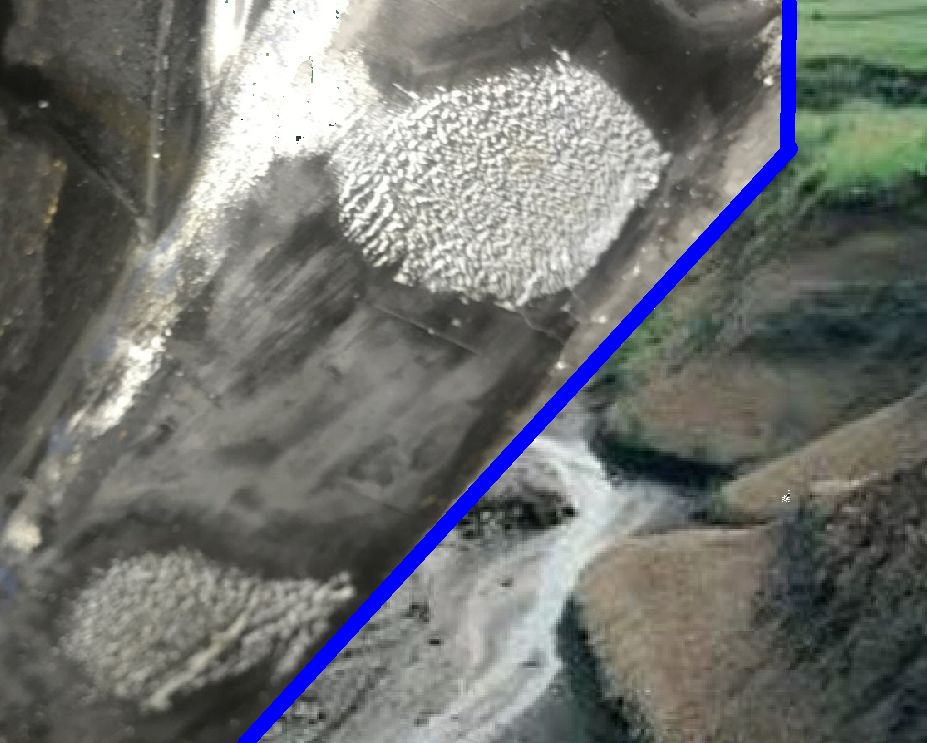
We have all witnessed the destructive power of fast flowing flood waters. Molten aluminum has nearly the same viscosity as water. A high pressure casting die witnesses a fast flowing flood every shot. It is not surprising that we see related erosion where the flow is the fastest. In die casting dies one universal fast flow location is downstream of the gate. In this pictured example of a die making structural castings the erosion downstream of the gates is clearly visible. Obviously this creates textured casting surfaces if not major sticking problems.
Usually the die designers defend their design when this occurs. Most HPDC die design are created using the industry standard formula for gate size. They are based on using historic alloys injected just above the melting temperature. This strategy works well for most historic aluminum HPDC castings. It is possible to avoid erosion injecting secondary aluminum into molds that have a fill path length of less than 22 inches (0.55 meters) using the text book gating sizes and standard 120 in/sec (3.0 meter/sec) fast shot speeds. This makes sense because the standard formula use this as a basis.
However we as an industry are being asked to do more. Structural castings have fill path lengths greater than 22 inches and are made of primary alloy with low iron content. It is not surprising that we see major erosion when 280 in/sec (7.0 meter/sec) shot speeds and 1350F (732C) process settings are being used to fill the far end of the structural castings.
How do you solve die erosion. The simple answer is to design a die with better gating. Usually this is not an affordable option after a die is built and production has started. Die surface coatings are helpful. Due to the high cost of effective coatings they are best applied to local sub inserts. I like locally making the part wall thickness down stream of the gates 50% thicker. This 50% increase is blended back to standard wall thickness over about 3 inches (90 mm) Even though this will be out of part print it is easier to obtain forgiveness than permission.
